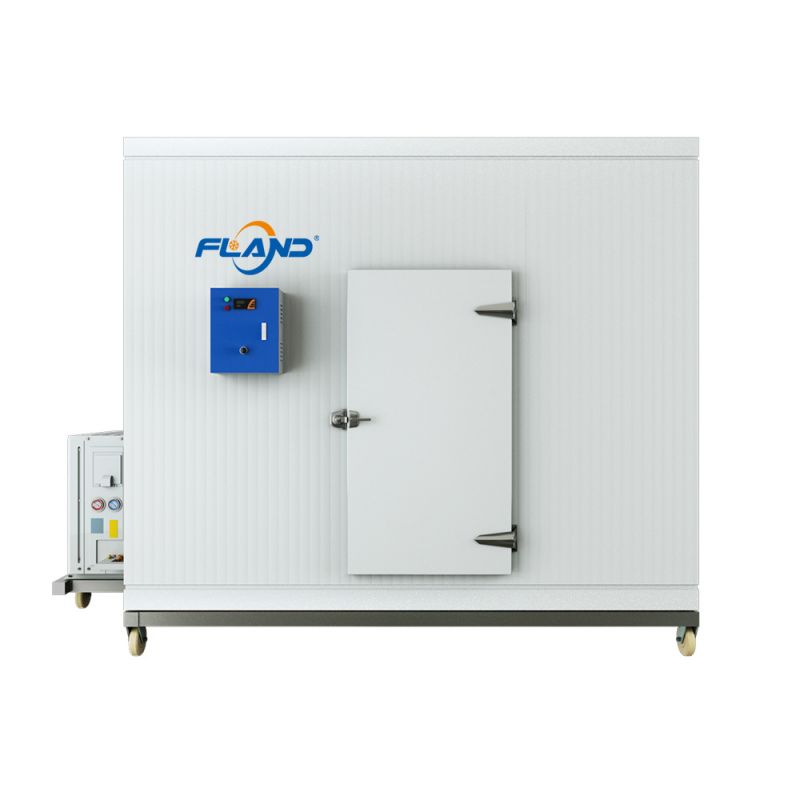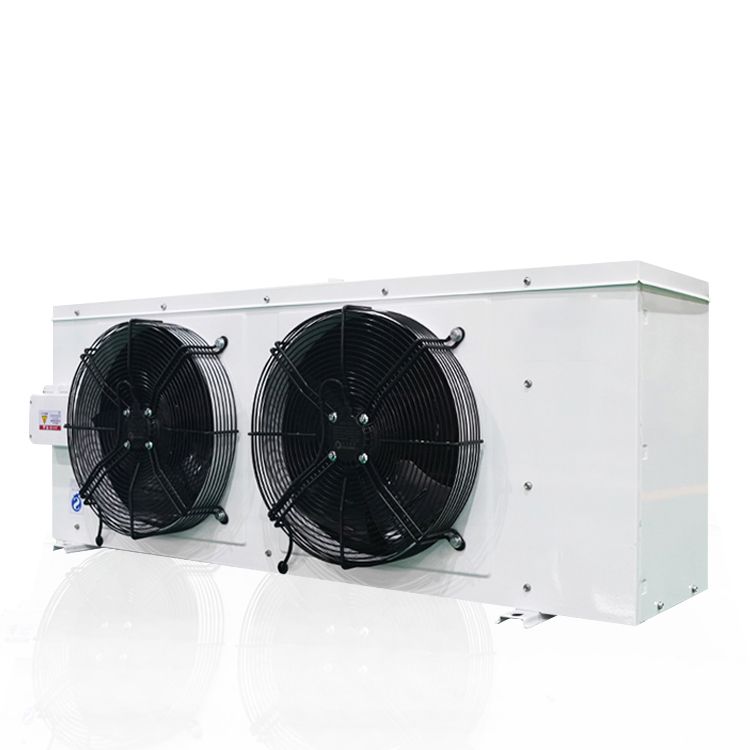Essential website updates between 07:00-07:30am CET 29 September 2023 may cause disruption.
Reliable transportation and electricity can be a tall order in the high mountains, but investments in the cold chain have brought vaccines several steps closer to the community. Prefabricated Cold Room

Humla, a remote mountain district in Nepal, is finally receiving booster doses of COVID-19 vaccines. Recent investments in the area's cold chain mean the longstanding challenge of vaccine transportation and storage in the Himalayan district has all but melted away.
Vaccines, including the COVID-19 booster doses, are stored in four refrigerators in the District Health Office (DHO) at Simkot, the district's headquarters, which lies 2,910m above sea level, shadowed on each side by steep peaks. From there, they are distributed to health posts across the district in insulated, ice-packed vaccine carriers.
"It was challenging to develop cold chain capacity for a district as remote as Humla. Lack of road networks and difficulty of existing roads pose a hurdle in the availability of medicine, medical equipment, vaccines, or other medical supplies to the communities of the remote villages," said Surbir Shahi, the Vaccination Unit In-charge at the DHO, Humla.
Surbir Shahi, the Vaccination Unit In-charge at vaccine storage room of DHO, Humla. Credit : Chhatra Karki
But since COVAX supplied Nepal with some US$ 700,000 in cold chain and ultra-cold chain support, things are getting a little easier. That money – disbursed by Gavi and put to work by UNICEF, in partnership with the government — has helped extend and upgrade the country's network of fridges, freezers, coolers and carriers to make sure that vaccines are able to be kept at the correct temperature, all the way from the manufacturer to the syringe.
"Efforts made by the Government of Nepal in collaboration with various organisations like UNICEF to strengthen and amplify the cold chain in Nepal are commendable," he said.
Shahi explained that here in the mountains, the new investment has given otherwise unreached families, individuals, and communities, previously impossible access to protective vaccines, including the COVID-19 booster.
It takes three days of walking to reach the Saipal Rural Municipality of Bajhang district from the district headquarters, Chainpur, a valley town held in the arc of the Seti River.
Apart from its spectacular topographical isolation, Saipal is also troubled by a lack of infrastructure. If previous vaccination campaigns have struggled to reach their targets, local leaders say it's not hard to see why.
"Due to geographical remoteness, it is difficult to organise vaccination campaigns in the Himalayan districts like ours," said Dolma Tamang, Deputy Chairperson of Saipal rural municipality. "We installed an ILR [ice-lined refrigerator] to store vaccines at the health centre under the local government, but the electric power available was not enough to operate the fridge. After that, solar panels have been set up to operate the refrigerator," she recounted.
Electricity is currently available only at night in Saipal, owing to the low production by a nearby micro-hydro power plant. Nepal's Alternative Energy Promotion Center has promised provide 2kW of electricity to facilitate the storage of vaccines, according to Tamang.
Namkha rural municipality of Humla district shares Saipal's plight. It takes a full five days to move from one ward to another in Namkha. Here, vaccine storage is supported by solar power, though a local hydropower project exists.
The district health office of Doti in the Far-Western Province boasts four ice-lined vaccine refrigerators and two deep freezers with a power backup. The health centers dotting the district share a total of 30 ILRs to house vaccines, and the vaccine programme has become increasingly effective as the number of ILRs has risen, according to the district authorities. But this didn't happen overnight.
"Earlier, a single fridge had to cover the whole of the district. So, when the vaccine was taken on a carrier to the far side, it used to deteriorate on the way. There was a risk of ice in ice packs melting on the way while transporting from the district headquarter to a distant village, resulting in a likely decline in the efficacy of the vaccines," recalled Dilli Raman Joshi, who heads the DHO in Doti.
"Investments by the Nepal Government and the UNICEF in cold chain storage has equipped every local unit and health institution to store vaccines," Joshi added.
Walk-in coolers have been installed in Dadeldhura, a district adjoining Doti district, to increase the capacity of vaccine storage in the 2–8°C temperature range. The coolers and cold rooms have been set up on the initiative of the Provincial Health Logistics Management Centre of the Far-Western Province, mobilising technical and financial support from UNICEF.
"With the installation of the walk-in coolers, it will be easier to deliver the vaccine to the hilly districts of Dadeldhura, Baitadi, Darchula, Doti, Bajura, Bajhang, and Achham in the far west. Earlier, vaccines were brought from Dhangadhi and stored in refrigerators," said Keshar Saud, head at DHO, Dadeldhura.
He is excited that the walk-in coolers will be operational in a month or two. "A large store room at the DHO has been turned into a cold room," he explained.
The Building of Dadeldhura District Health Office where a cold room was recently established. Credit: Keshar Saud
Saud also noted that improvement in technical knowledge accompanied the infrastructural shift.
"Due to lack of technical knowledge, in some cases, it was found that the vaccine was damaged in many places while trying to maintain very low temperatures," Saud explained. "But, with an increase in technical know-how, such human error has not been seen in recent times. Vaccine quality has been a top priority. Vaccination has been a successful programme in Nepal's public health, thanks to a strong mechanism."
"The Government of Nepal, UNICEF, and the local units have taken an important initiative to facilitate vaccination. A sub-cold chain system has also been arranged up to the local level," Saud added.
Twenty to 25 percent of vaccines are still being wasted in Dadeldhura district – a rate expected to be minimised by the new coolers and cold rooms.
Sagar Lama, who has been working as a Health Assistant at Namkha rural municipality for three years now, is proud that Namkha Health Post has already administered booster doses of COVID-19. The health post has also been operating mobile camps for vaccination.
"People are benefitting from the regular vaccination program in the rural municipality. Vaccine carriers deliver the vaccines in ice packs to as remote villages as Limi in Namkha through snowy roads," Lama said proudly, before qualifying that vaccination campaigns are run only four times a year in Limi village, which borders Tibet in the north, and noting that the vaccination campaign scheduled for the month of Ashoj (September) was halted due to a snowfall.
Vaccine storage has similarly changed the lives of people in Bajhang district.
"There is a fridge to store vaccines in Kada Health Centre. Vaccines are brought in carriers with four ice packs from the headquarters, and the vaccine carrier that is transported to the village has two ice packs," explained Bhagarathi Bohora, who has been working for four years as an auxiliary nurse-midwife at Basic Health Unit, Saipal Rural Municipality. "It takes two days to carry the vaccines to the village. The rural municipality has electricity but no transportation."
Bhagrathi Bohara.ANM at Saipal Rural Municipality, Bajhang.Credit : Chhatra Karki
"Due to the lack of a cold chain, the instances of vaccine damage were high in the past," she said. "There is no problem in maintaining a low temperature for the vaccines anymore," she added, before noting that she does still worry that her district is facing a shortage of skilled technicians.
"Because of the provision of vaccine carriers, vaccines are brought on time and children are vaccinated timely," she said.
In addition to money released through COVAX, Gavi has provided well over $2.5 million to Nepal in cold chain support over the past four years.
Sign up to receive our top stories and key topics related to vaccination, including those related to the COVID-19 pandemic.

Cold Room Insulation By clicking the "Subscribe" button, you are agreeing to receive the digital newsletter from Gavi, the Vaccine Alliance, agreeing to our terms of use and have read our privacy policy.